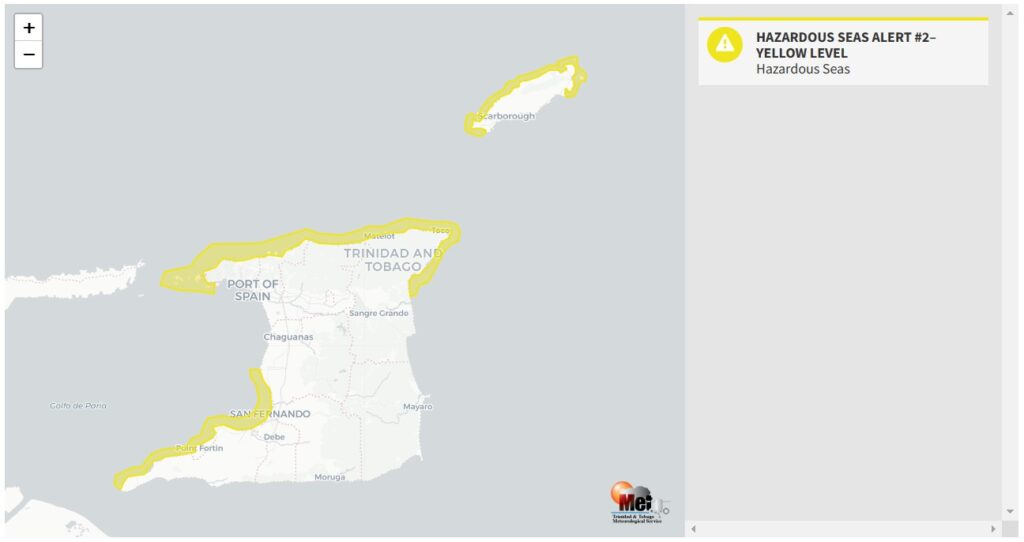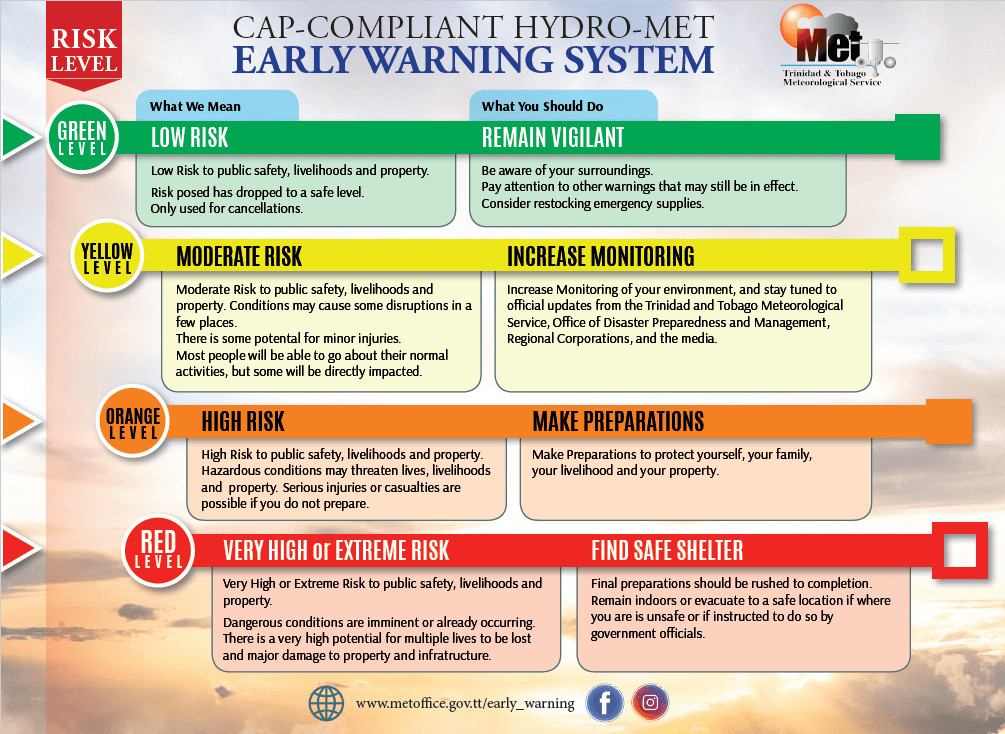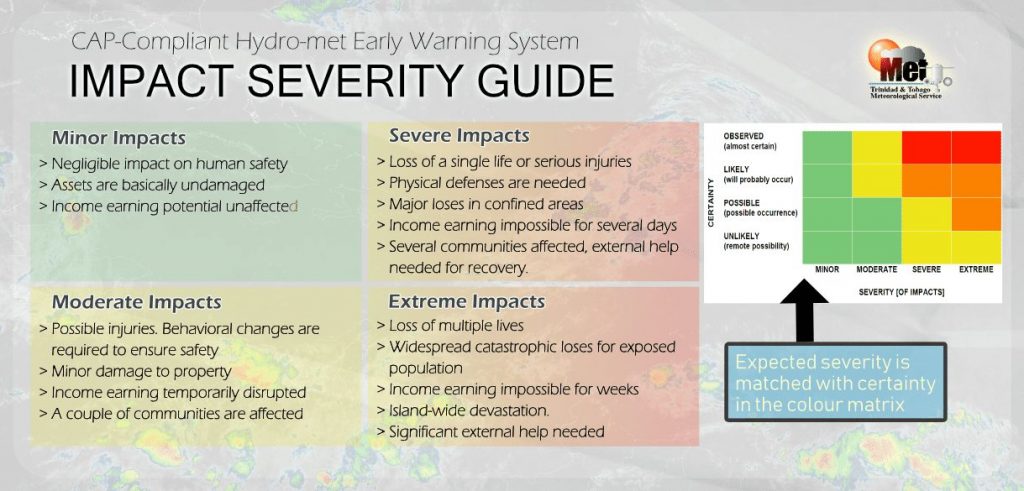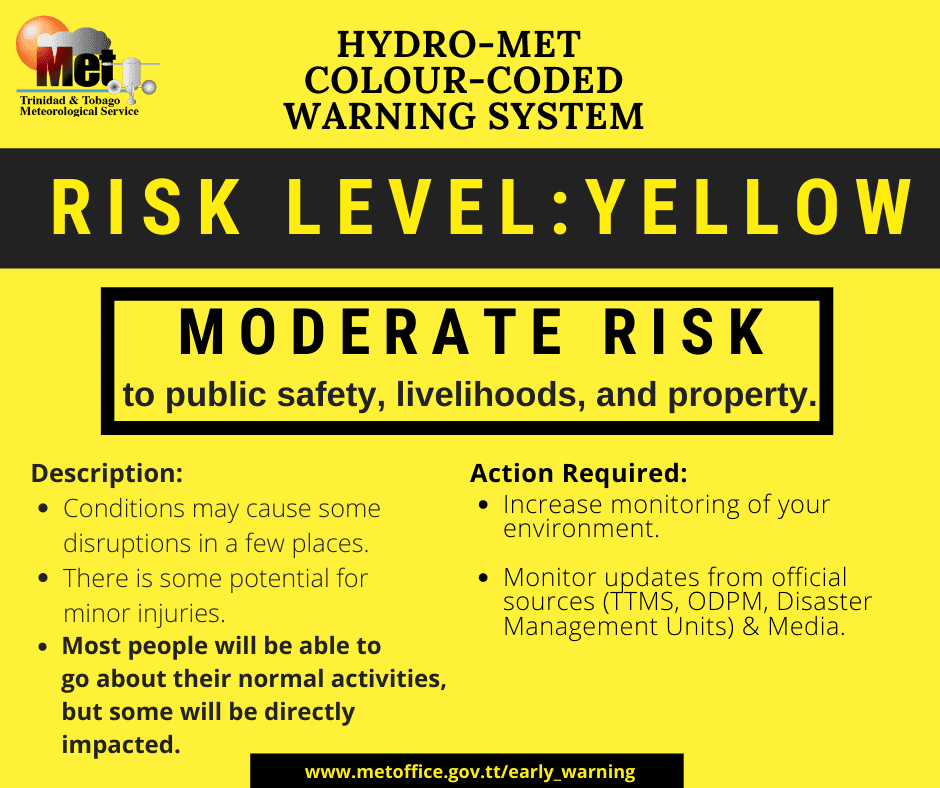Long-period swells originating from powerful low-pressure systems in the North Atlantic are now moving across the Lesser Antilles. These high-energy waves have already begun to affect T&T, increasing the risk of rip currents and battering waves along select coastlines.
What you need to know
— What is happening: Swells with periods up to 16 seconds have begun to affect Trinidad and Tobago’s northern coastlines. Over the next several days, swells are forecast to continue, affecting sheltered coastlines of Trinidad in the Gulf of Paria, with swell periods gradually decreasing into next week. Large, battering waves are likely.
— What can we expect: Large, battering waves are possible along T&T’s northern coastlines, with choppy conditions in sheltered areas. Minor to moderate coastal erosion is possible. There is a high risk of rip currents along the country’s northern coastlines. Spring Tides begin on Sunday, with the overall sea state in open waters moderate through the alert period.
— Alerts/Watches/Warnings: A Hazardous Seas Alert (Yellow Level) remains in effect for northern and eastern Trinidad and Tobago, as well as sheltered coastlines of Trinidad in the Gulf of Paria from 12:00 PM Tuesday, February 28th, 2023, and remains in effect through 12:00 PM Monday, March 6th, 2023, from the Trinidad and Tobago Meteorological Service. There are no tropical storm or hurricane watches or warnings in effect for T&T at this time.
The Hazardous Seas Alert
The Trinidad and Tobago Meteorological Service updated a Hazardous Seas Alert (Yellow Level) on Tuesday at 11:55 AM. The new alert went into effect for northern and eastern areas of Trinidad and Tobago, as well as western sheltered areas of both islands from 12:00 PM Tuesday, February 28th, 2023, and remains in effect through 12:00 PM Monday, March 6th, 2023. Swells are forecast to propagate into the Gulf of Paria, affecting the north-facing coastlines of southwestern Trinidad.
Trinidad and Tobago is not under any tropical storm watch or warning at this time.


“Northerly long period swells have been observed affecting the coastal areas of Tobago as well as the Northern, Eastern, and some parts of the Western coastal areas of Trinidad. These conditions are expected to persist over the next few days until Monday 6th. These swells can result in battering waves at coastal regions and can be exacerbated during spring and high tides,” according to the Trinidad and Tobago Meteorological Service. This “alert” status takes into account the possibility of the event occurring. This hazardous sea event has been observed.

The color of the alert indicates the severity of the event and the probability of the event occurring. Currently, the alert level is Yellow. This means that the hazards have been observed, but the severity of impacts is moderate for this particular alert. Large battering waves and a high risk of rip currents are the two main hazards associated with this swell events.
For a moderate Hazardous Seas Alert, there is the potential for possible injuries, where behavioral changes are required to ensure safety. There may be minor damage to property, with income-earning temporarily disrupted and a couple of communities affected.
The Met Office is advising sea bathers, fishermen, and small craft operators to carefully monitor coastal sea conditions and exercise caution along the coast. They added that the public should avoid marine activities.











